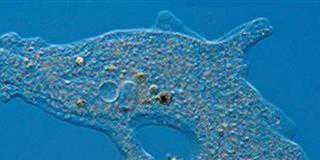
Photo: Bill Kerr
Swiss chard, in particular, is a powerhouse of nutrition. It contains at least 13 polyphenol antioxidants and is an effective blood sugar regulator.
It is also very high in vitamins K and A, and contains vitamins B1, B2, B3, B6 and C, as well as magnesium, copper, manganese, potassium, iron, choline, calcium, phosphorous, zinc, foliate, selenium and protein, amongst other minerals.
Swiss chard can be harvested over a long period, and will continue to grow new leaves when not harvested for a time. Simply ensure that enough leaves are left on the plant so that it can continue gathering sunlight for growth, or the recovery after picking will be slow.
Planting
Space the plants between 15cm and 20cm apart in rows 30cm apart. The variety of choice is Fordhook Giant, which you can buy in seedling trays from a nursery.
Alternatively, buy packets of different coloured plants. These look attractive in the formal garden, but are not quite as productive as the Fordhook Giant variety.
A second method is to sow direct. Begin by soaking the seed in water overnight for better, quicker germination.
The seed is cheap, and packets usually contain an ample quantity, so sow a little thicker, cover the seed with about 1cm of soil, and thin out the young plants when they are 15cm tall.
These thinnings can be eaten, so they need not go to waste. In cool areas, it’s best to do three plantings a year: at the end of winter, in mid-summer and in late summer. This ensures that you have a steady supply.
If you grow Swiss chard during winter in a frost-prone area, use frost cover to protect the plants.
This works better if it does not touch the plants, so place hoops over the chard before covering it.
In subtropical areas, plant in March so that the plants grow through winter.
Swiss chard does not thrive under hot, humid conditions.
This plant is a heavy feeder. If the soil is not highly fertile with a healthy organic content, apply LAN from time to time to keep the leaves dark green.
Pest control
The potato ladybird is a problem is some areas on the Highveld. It normally breaks dormancy after the first summer rain, and can rapidly cause substantial damage to Swiss chard.
If only a few are present, pick them off by hand or spray with a broad-spectrum insecticide, observing the withholding period. Aphids may attack the plants occasionally; spray Pirimicarb to get rid of them.
Because Swiss chard contains oxalic acid, which has a sour taste, it is best boiled and the water discarded.
Finally, remember that nutritional levels drop after harvesting, which is another reason for growing this vegetable at home.













